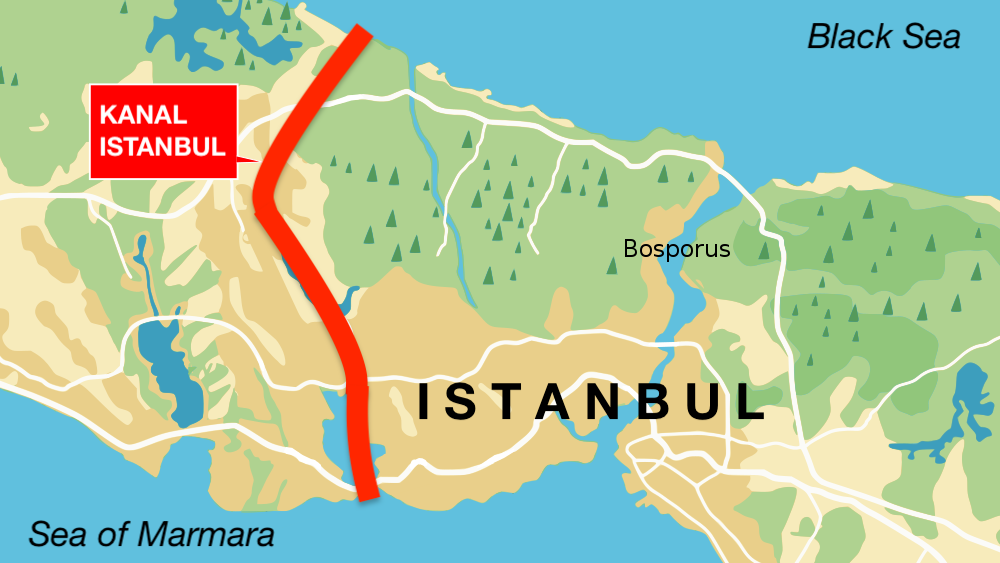Europe’s busiest airport? Heathrow and Istanbul battle for the title
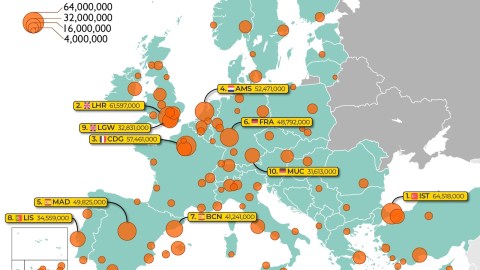
- In 2020, Istanbul Airport overtook London’s Heathrow as Europe’s busiest airport.
- Istanbul held on to the title until 2022, but may have lost it again to Heathrow last year.
- That’s not to say the Turks are worried about the long term: IST has five runways, while LHR has just two.
Squint at this map and you’ll see the Blue Banana: the European megalopolis that stretches from Manchester to Milan. It’s home to 100 million people and represents the developed world’s largest concentration of wealth, population, and international airports.
Six of Europe’s 10 busiest international airports are in or near the Blue Banana, including two of London’s six: Heathrow (LHR) and Gatwick (LGW). It also contains the capital city airports of the Netherlands and France: Amsterdam (AMS) and Paris (CDG).
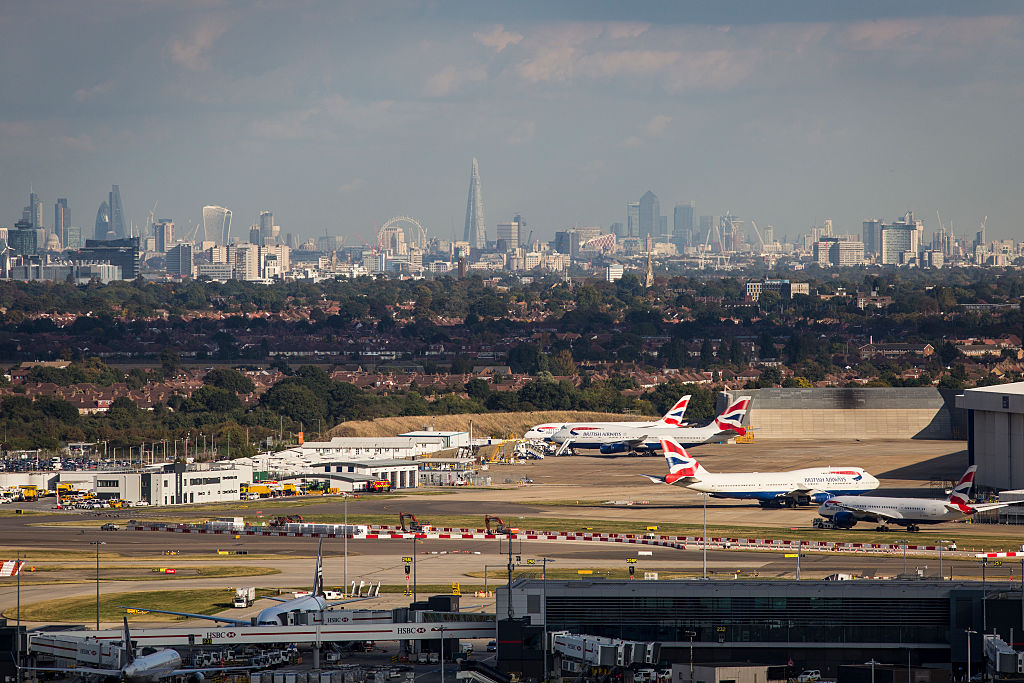
Germany’s political capital Berlin doesn’t make the top 10, but its financial and economic capitals do: Frankfurt (FRA) and Munich (MUC). Three more of the top 10 busiest airports are on the Iberian Peninsula, curiously arranged in an almost perfectly straight line, from Lisbon (LIS) over Madrid (MAD) to Barcelona (BCN).
Air traffic thins out farther north and east in Europe. However, the busiest of the continent’s 100 airports sits firmly on its periphery: Istanbul Airport (IST). That may come as a surprise for those who haven’t paid attention to air passenger statistics since the pandemic, because before 2020, Heathrow was Europe’s number one airport, year after year.
Structural advantage
The figures used for this map (for passengers arriving, departing, and transiting in 2022) show IST clearly in the lead: 64.5 million, versus 61.6 million for LHR. In 2022, air traffic in Europe was still recovering from its coronavirus-induced dip, so it’s too early to say that Heathrow is permanently banished from first place. But Istanbul Airport has one structural advantage: While LHR is old and hemmed in, IST is brand-spanking new, with plenty of room to expand.
In 2013, Europe’s 10 busiest airports transported 481 million passengers, a figure that kept rising by about 20 million per year, reaching just shy of 610 million in 2019. That’s the record so far because in 2020, numbers crashed — pardon the expression — to fewer than 186 million, climbing back up to 250 million in 2021 and 475 million in 2022.
For most of the past decade, Heathrow saw its passenger numbers rise and rise: from 72.4 million in 2013 to a record 80.9 million in 2019. Then came 2020, with no more than 22.3 million passengers, dropping to 19.4 million in 2021. As a result, LHR was relegated to an ignominious eighth place in the European rankings. However, Heathrow’s remarkable rebound in 2022 shows its resilience.
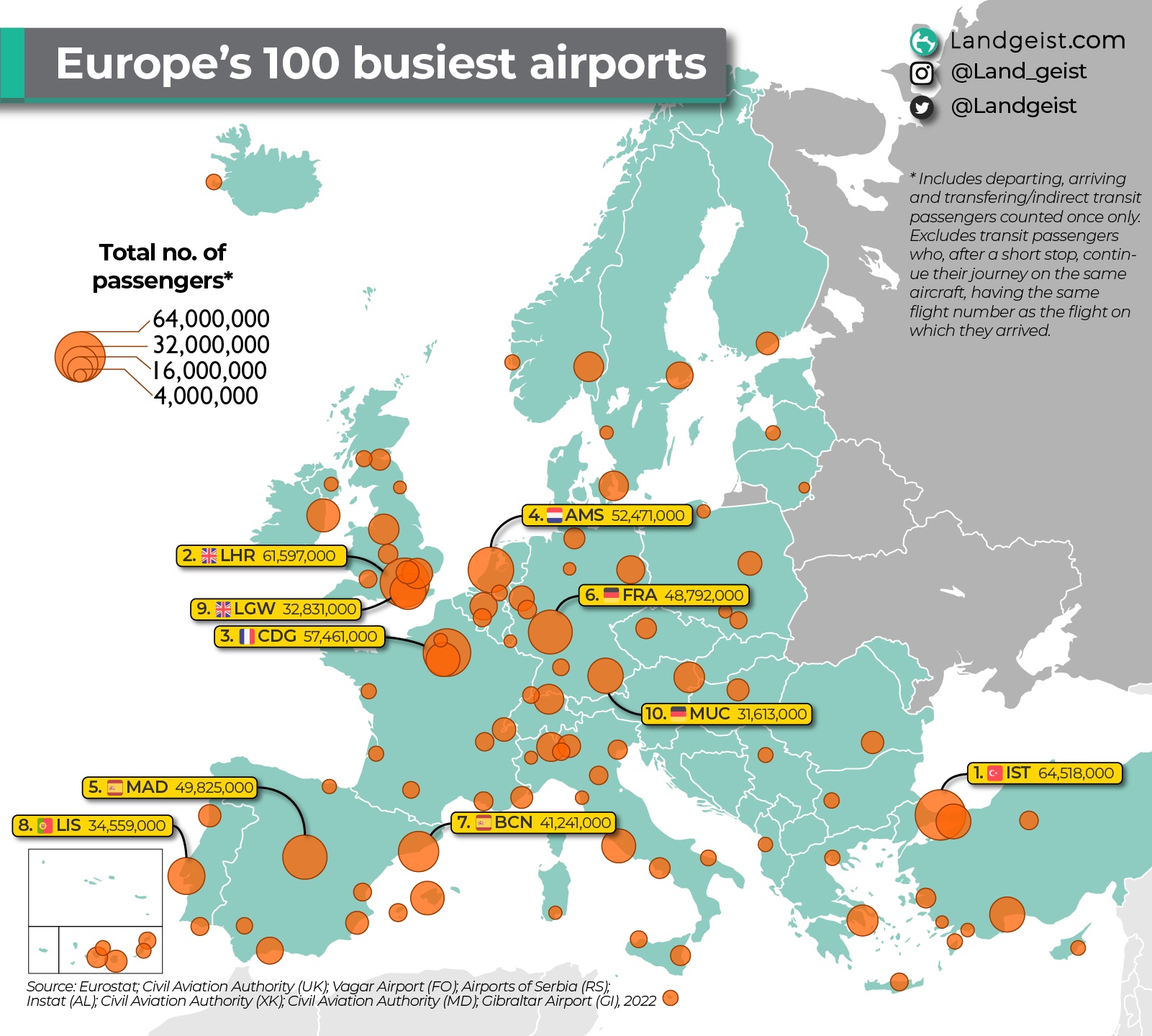
But that resilience has limits. London’s busiest airport makes do with just two runways and operates at close to maximum capacity. Annual flights to Heathrow are capped at 480,000 per year. Adding a third runway, which would allow passenger numbers to eventually reach 142 million, would require the demolition of a nearby housing estate and extensive alterations to London’s M25 beltway, which runs right through the proposed expansion. Despite stiff opposition from locals and environmentalists, the plan may be re-examined soon.
The old Istanbul Atatürk Airport (51.3 million passengers in 2013) had a similar problem, hemmed in by the city and the sea on all four sides. So, Turkey’s President Erdogan — considerably less bothered by local opposition and environmental concerns — decided to build an entirely new airport.
Bye bye, Atatürk
The new Istanbul Airport was inaugurated in 2019 when it took over the old airport’s IATA code (IST). Perhaps tellingly for Erdogan’s Islamicizing politics, it dropped the name of Atatürk, named after Turkey’s secular founder. So far, Istanbul Airport is the only completed project among Erdogan’s major initiatives, which include Kanal Istanbul, a proposed artificial counterpart to the Bosporus.
With its five runways, Istanbul Airport is designed to handle up to 200 million passengers per year. Hitting that number would make it the busiest airport not only in Europe but the world. It’s not there yet, but growth remains steady. In the first nine months of 2023, IST transported 58 million passengers, a 21.7% increase year over year. If that trend holds for the entire year, the airport will have handled 78.5 million passengers in 2023.
That may not be enough to keep Heathrow down. In late October, London’s principal airport said it expected passenger numbers for 2023 to hit 79.3 million, a figure adjusted upward to 81.4 million by mid-December. If true, that would not just break IST’s hold on the top position, but also LHR’s own record from 2019.
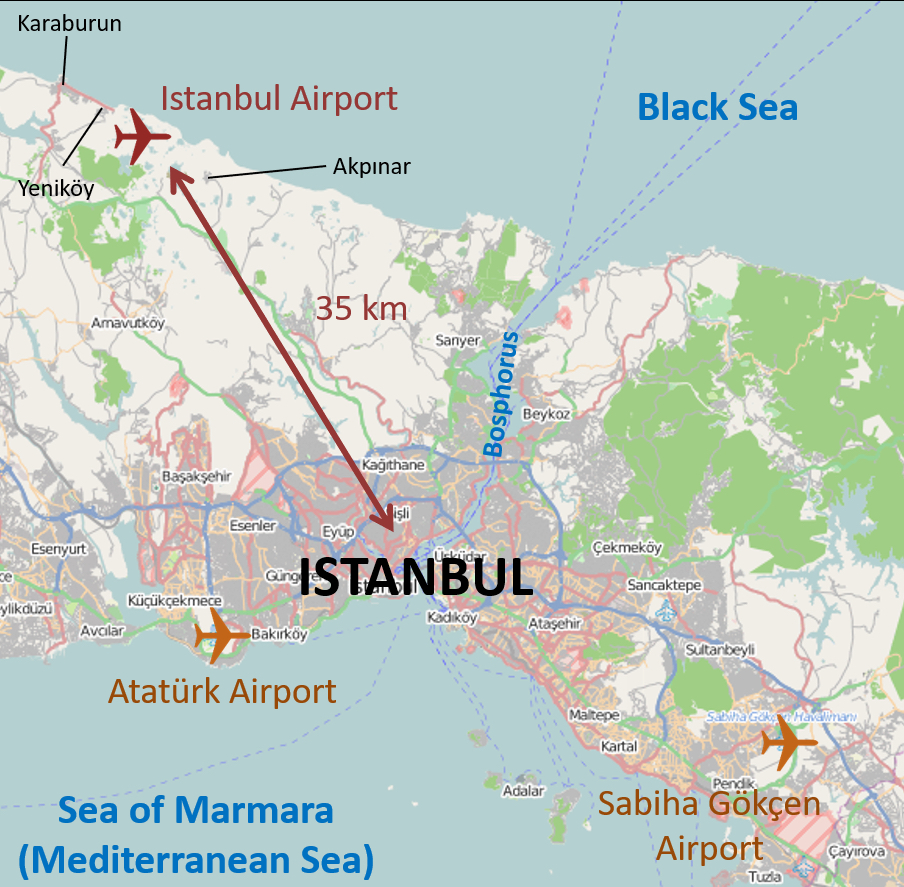
But don’t count Istanbul Airport out just yet. With a target for 2024 of 85 million passengers and plenty of capacity for growth for the years to come, it looks like IST will get busier and busier, while LHR simply runs out of runway.
Strange Maps #1129
Got a strange map? Let me know at strangemaps@gmail.com.
